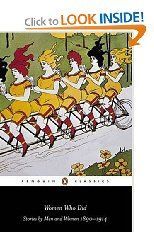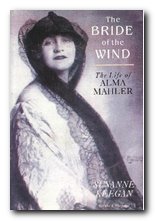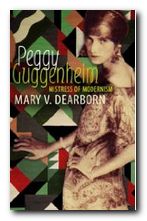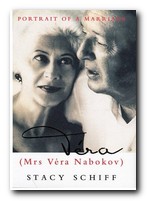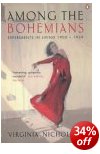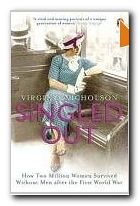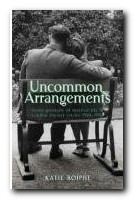tutorial, commentary, study resources, and web links
What Maisie Knew (1897) comes from the late period of Henry James’ long and prolific career as a novelist, and yet it is written in a relatively straightforward manner compared with The Wings of the Dove (1902), The Ambassadors (1903), and The Golden Bowl (1904). The narrative is split into mercifully short chapters, and since the protagonist is a young girl, the first part of the book at least is psychologically uncomplicated – by James’ standards. It’s also (rather unusually) quite funny.

Henry James – by John Singer Sargeant
As a subject, or as James would call it a donnée, the story is quite ahead of its time. It deals with what we would now call a ‘dysfunctional family’. Two adults behave appallingly both to each other and to their only child. Maisie is only six years old when the story begins, and she has to endure neglect of both a physical and emotional kind. She never receives any schooling – though that would not be altogether unusual for a girl at the end of the nineteenth century (even Virginia Woolf didn’t go to school) – and she is protected only by the presence of paid governesses.
The triumph of the novel is to persuade us that as she becomes older, Masie begins to understand what is happening around her and develops ‘a moral sense’. She is an entirely passive heroine – rather like Fanny Price in Jane Austen’s Mansfield Park. She can only sit tight and watch as adults manoeuvre around her, manipulating her vulnerability for their own ends. But eventually, as she becomes older (her age is always left vague) she is confronted with a situation in which she is able to make a moral choice which reveals her inner maturity.
What Maisie Knew – critical commentary
Social conventions
There are a number of forces at work in this novel that stem from conventions in the upper echelons of society in the nineteenth and early twentieth century. These might be difficult to understand for contemporary readers.
A married couple were free to do more or less what they wished – so long as the appearance of respectability was maintained. Married men could absent themselves from home on the pretext that they were visiting friends or staying at their club. A married woman could entertain single men in her home – but only if there were others present – either other single men, or in the case of What Masie Knew if a child was present, acting as a sort of under-age chaperone.
Most of these conventions were designed to preserve power structures and concentrations of wealth in the form of both capital and income. People marrying outside (that is beneath) their social class were endangering the accumulation of capital via inheritance. To marry into a higher class was desirable but rare.
Many of James’s novels are concerned with this connection between money and social prestige. This is often presented in the form of newly rich Americans seeking to establish social prestige with Europeans who have social caché but no money (The Golden Bowl). In Masie figures such as Mr Perriam and the ‘Countess’ perform this role. Mr Perriam is viewed with suspicion because he is newly rich – and might even be Jewish. The American ‘Countess’ (who is of course not a countess) is very rich but is black and is therefore unacceptable.
But this social phenomenon is complicated by the fact that there is also a great deal of prestige attached to the source of the capital. To marry into an old family with centuries of inherited wealth as the acme of success. But to accumulate capital via commerce or trade was simply not acceptable – unless of course the capital accumulation was so enormous as to either pay off the debts or buy a way into the upper class.
Many of James’s novels have these conventions as a basis of their morality, but they are unstated, as are many ideological constructs in society. They are taken for granted, as if part of the ‘natural’ order of things. The characters of his novels must know these conventions to survive socially, and part of the interest in Masie’s case is that being very young, she is only in the very early stages of developing this understanding.
Marriage
The novel sheds a very negative light on the state of marriage. It begins with the divorce of Beale Farange and Ida, who go on to despise each other. They then re-marry – both of them to younger people than themselves. These second marriages are no more successful than the first. Beale Farange marries Miss Overmore, but eventually spends most of his time away from the family house – in clubs (the Chrysanthemum) at Cowes yachting week, and eventually as the paid lover of the black American ‘Countess’. Ida has a succession of lovers (a City broker who goes bust, the Captain, and Lord Eric) and when last seen she is threatening to go abroad. Even Sir Claude’s relationship with Miss Overmore/Mrs Beale eventually turns sour.
It is also interesting to note the subtle relationship between geography and morals. In the late nineteenth century it was quite common for people (usually males) to travel outside Britain to indulge in what is today called sexual tourism. Once the physical border of the Channel had been crossed, the social and psychological landscape changed. Unconventional social and sexual relations were tolerated – partly because of less puritanical mores, and partly because any deviant behaviour was being conducted beyond the sharp-eyed scrutiny of British society.
Ida Farange, possibly the most raffish of the characters, goes to Florence and ‘picks up’ a gentleman en route; and when Sir Claude takes Maisie away to try and persuade her to live with him and Mrs Beale, they go to Boulogne. He proposes that they live together in the south of France, and even when Maisie is trying to persuade Sir Claude to accept her alone on her own terms, it is to Paris that she wants him to take her. They almost do make that journey, narrowly missing the train by just a few moments.
Point of view
James very cleverly gives the impression that he is telling the story from Maisie’s point of view. There are no scenes in which she is not present for instance, and the separate chapters invariably begin with an account of events as Maisie perceives them. But in fact the controlling point of view is that of James himself. From time to time he shows his hand as first person narrator – “We have already learned … on a certain occasion hereafter to be described … in the manner I have mentioned”.
She met at present no demand whatever of her obligation, she simply plunged, to avoid it, deeper into the company of Sir Claude. She saw nothing that she had seen hitherto – no touch in the foreign picture that had at first been always before her. The only touch was that of Sir Claude’s hand, and to feel her own in it was her mute resistance to time. She went about as sightlessly as if he had been leading her blindfold. If they were afraid of themselves it was themselves they would find at the inn.
The young girl is foregrounded, the detail of the hand is one she might realistically notice – but the controlling vision here is that of an outsider – James himself commenting on her position and that of her stepfather.
Motifs
Careful readers will have no difficulty recognising the repeated motifs that occur in the novel. Whenever Beale Farange makes an appearance in the narrative he is described in terms of his teeth. In Ida’s case it is her over-use of jewellery and cosmetics – her “huge painted eyes … like Japanese lanterns”. In Sir Claude’s case it is his addiction to cigarettes. After repeatedly blowing smoke into Masie’s face throughout the novel, there is one scene where James describes them as smoking together – in the plural. “After dinner she smoked with her friend – for that was exactly what she felt she did … they stood smoking together under the stars”.
What Masie Knew – study resources
![]() What Maisie Knew – Oxford World Classics – Amazon UK
What Maisie Knew – Oxford World Classics – Amazon UK
![]() What Maisie Knew – Oxford World Classics – Amazon US
What Maisie Knew – Oxford World Classics – Amazon US
![]() What Maisie Knew – Penguin Classics – Amazon UK
What Maisie Knew – Penguin Classics – Amazon UK
![]() What Maisie Knew – Penguin Classics – Amazon US
What Maisie Knew – Penguin Classics – Amazon US
![]() What Maisie Knew – Dover Thrift – Amazon UK
What Maisie Knew – Dover Thrift – Amazon UK
![]() What Maisie Knew – Dover Thrift – Amazon US
What Maisie Knew – Dover Thrift – Amazon US
![]() What Maisie Knew – Kindle eBook (includes 60 James books for £2.23)
What Maisie Knew – Kindle eBook (includes 60 James books for £2.23)
![]() What Maisie Knew – eBook version at Project Gutenberg
What Maisie Knew – eBook version at Project Gutenberg
![]() What Maisie Knew – Audio book edition at LibriVox
What Maisie Knew – Audio book edition at LibriVox
![]() What Maisie Knew – 2012 film version – Amazon UK
What Maisie Knew – 2012 film version – Amazon UK
![]() What Maisie Knew – 2012 film version – Amazon US
What Maisie Knew – 2012 film version – Amazon US
![]() The Cambridge Companion to Henry James – Amazon UK
The Cambridge Companion to Henry James – Amazon UK
![]() Henry James – biographical notes
Henry James – biographical notes
![]() Henry James at Wikipedia – biographical notes, links
Henry James at Wikipedia – biographical notes, links
![]() Henry James at Mantex – tutorials, biography, study resources
Henry James at Mantex – tutorials, biography, study resources
What Maisie Knew – plot summary
Maisie is the young daughter of louche and divorced parents Beale and Ida Farange. She is looked after by two governesses – the attractive Miss Overmore at her father’s house and the unattractive Mrs Wix at her mother’s house in six monthly intervals. Both parents use Masie as a bargaining counter and neglect her emotionally whilst in pursuit of their own self-indulgent ends and their psychological war games against each other.
 Both parents subsequently re-marry, to people much younger than themselves. Ida’s marriage to Sir Claude quickly deteriorates, and Ida takes up with other men, leaving Sir Claude to look after the interests of Masie and Mrs Wix.
Both parents subsequently re-marry, to people much younger than themselves. Ida’s marriage to Sir Claude quickly deteriorates, and Ida takes up with other men, leaving Sir Claude to look after the interests of Masie and Mrs Wix.
Beale Farange meanwhile marries Miss Overmore (who becomes Mrs Beale) but spends most of his time living away from home. Sir Claude establishes a romantic liaison with Mrs Beale which enables him to place Maisie back in her (absent) father’s household.
Maisie is used (and abused) by most of these adults as a screen of respectability for conducting liaisons with other people. Sir Claude alone tries to maintain a degree of social respectability that will leave Maisie protected, but it becomes apparent that he is in thrall to Mrs Beale.
When both her natural parents abandon her completely, Sir Claude takes Maisie to France, and Mrs Wix follows. They are then joined by Mrs Beale. Maisie is confronted with the choice of living with Sir Claude and Mrs Beale (who are not married to each other) in the south of France, or staying with Mrs Wix in an indefinite future. Maisie is deeply enamoured with Sir Claude, but she chooses Mrs Wix, and the two of them return to England.
Principal characters
| Beale Farange | tall, handsome, lounge lizard – Maisie’s father |
| Ida Farange | tall, attractive, billiard player – Maisie’s mother |
| Maisie Farange | six years old at the start of the novel, a teenager at the end |
| Moddle | Masie’s nurse at the original Farange household |
| Miss Overmore | Maisie’s attractive first governess, later to become Mrs Beale Farange |
| Mrs Wix | cross-eyed and unfashionable – Maisie’s governess at Ida’s |
| Clara Matilda | Mrs Wix’s (possibly imaginary) dead daughter |
| Lisette | Maisie’s french doll at Ida’s |
| Susan Ash | an under-housemaid at Beale Farange’s |
| Sir Claude | handsome, young, Ida’s second husband |
| Mr Perriam | rich City businessman, a suitor of Ida’s who goes bust |
| Lord Eric | a suitor of Ida’s who is mentioned but never appears in the novel |
| The Captain | sun-tanned and short-lived suitor of Ida’s |
| The ‘Countess’ | rich but ugly black woman who pays Beale Farange to be her lover |

Henry James’s study
Literary criticism
Martha Banta, ‘The Quality of Experience in What Maisie ‘Knew, New England Quarterly, 42 (Dec 1969) 483-510.
Jean Frantz Blackall, ‘Moral Geography in What Maisie Knew‘, University of Toronto Quarterly, 48 (1978) 130-148.
Peter Coveney, The Image of Childhood, London: Penguin, 1967.
Randall Craig, ‘”Reading the Unspoken into the Spoken”: Interpreting What Maisie Knew‘ Henry James Review, 2/3 (1981), 204-212.
Lloyd Davis, Sexuality and Textuality: Reading Through the Virginal, New York, 1988.
Barbara Eckstein, ‘Unsquaring the Squared Route of What Maisie Knew‘, Henry James Review, 5/3 (1984), 207-215
James W. Gargano, ‘What Maisie Knew: The Evolution of a Moral Sense’, Nineteenth-Century Fiction, 16 (June 1961), 33-46.
F.R.Leavis, ‘What Maisie Knew: A Disagreement’, in Anna Karenina and Other Essays, London, 1967.
Juliet Mitchell, ‘What Masie Knew: Portrait of the Artist as a Young Girl’, in John Goode (ed), The Air of Reality: New Essays on Henry James, London, 1973.
Muriel Shine, The Fictional Children of Henry James< Chapel Hill, NC, 1969.
Harris W. Wilson, ‘What Did Maisie Know?’ College English, 17 (February 1956), 279-282.
Ward S. Worden, ‘A Cut Version of What Maisie ‘Knew, American Literature, 24/4 (September 1953), 493-504.
Further reading
Biographical
![]() Theodora Bosanquet, Henry James at Work, University of Michigan Press, 2007.
Theodora Bosanquet, Henry James at Work, University of Michigan Press, 2007.
![]() F.W. Dupee, Henry James: Autobiography, Princeton University Press, 1983.
F.W. Dupee, Henry James: Autobiography, Princeton University Press, 1983.
![]() Leon Edel, Henry James: A Life, HarperCollins, 1985.
Leon Edel, Henry James: A Life, HarperCollins, 1985.
![]() Philip Horne (ed), Henry James: A Life in Letters, Viking/Allen Lane, 1999.
Philip Horne (ed), Henry James: A Life in Letters, Viking/Allen Lane, 1999.
![]() Henry James, The Letters of Henry James, Adamant Media Corporation, 2001.
Henry James, The Letters of Henry James, Adamant Media Corporation, 2001.
![]() Fred Kaplan, Henry James: The Imagination of Genius, Johns Hopkins University Press, 1999
Fred Kaplan, Henry James: The Imagination of Genius, Johns Hopkins University Press, 1999
![]() F.O. Matthieson (ed), The Notebooks of Henry James, Oxford University Press, 1988.
F.O. Matthieson (ed), The Notebooks of Henry James, Oxford University Press, 1988.
Critical commentary
![]() Elizabeth Allen, A Woman’s Place in the Novels of Henry James London: Macmillan Press, 1983.
Elizabeth Allen, A Woman’s Place in the Novels of Henry James London: Macmillan Press, 1983.
![]() Ian F.A. Bell, Henry James and the Past, London: Palgrave Macmillan, 1993.
Ian F.A. Bell, Henry James and the Past, London: Palgrave Macmillan, 1993.
![]() Millicent Bell, Meaning in Henry James, Cambridge (MA): Harvard University Press, 1993.
Millicent Bell, Meaning in Henry James, Cambridge (MA): Harvard University Press, 1993.
![]() Harold Bloom (ed), Modern Critical Views: Henry James, Chelsea House Publishers, 1991.
Harold Bloom (ed), Modern Critical Views: Henry James, Chelsea House Publishers, 1991.
![]() Kirstin Boudreau, Henry James’s Narrative Technique, Macmillan, 2010.
Kirstin Boudreau, Henry James’s Narrative Technique, Macmillan, 2010.
![]() J. Donald Crowley and Richard A. Hocks (eds), The Wings of the Dove, New York: W.W. Norton and Company, 1978.
J. Donald Crowley and Richard A. Hocks (eds), The Wings of the Dove, New York: W.W. Norton and Company, 1978.
![]() Victoria Coulson, Henry James, Women and Realism, Cambridge University Press, 2009.
Victoria Coulson, Henry James, Women and Realism, Cambridge University Press, 2009.
![]() Daniel Mark Fogel, A Companion to Henry James Studies, Greenwood Press, 1993.
Daniel Mark Fogel, A Companion to Henry James Studies, Greenwood Press, 1993.
![]() Virginia C. Fowler, Henry James’s American Girl: The Embroidery on the Canvas, Madison (Wis): University of Wisconsin Press, 1984.
Virginia C. Fowler, Henry James’s American Girl: The Embroidery on the Canvas, Madison (Wis): University of Wisconsin Press, 1984.
![]() Jonathan Freedman, The Cambridge Companion to Henry James, Cambridge University Press, 1998.
Jonathan Freedman, The Cambridge Companion to Henry James, Cambridge University Press, 1998.
![]() Judith Fryer, The Faces of Eve: Women in the Nineteenth Century American Novel, Oxford: Oxford University Press, 1976
Judith Fryer, The Faces of Eve: Women in the Nineteenth Century American Novel, Oxford: Oxford University Press, 1976
![]() Roger Gard (ed), Henry James: The Critical Heritage, London: Routledge, 1968.
Roger Gard (ed), Henry James: The Critical Heritage, London: Routledge, 1968.
![]() Tessa Hadley, Henry James and the Imagination of Pleasure, Cambridge University Press, 2009.
Tessa Hadley, Henry James and the Imagination of Pleasure, Cambridge University Press, 2009.
![]() Barbara Hardy, Henry James: The Later Writing (Writers & Their Work), Northcote House Publishers, 1996.
Barbara Hardy, Henry James: The Later Writing (Writers & Their Work), Northcote House Publishers, 1996.
![]() Richard A. Hocks, Henry James: A study of the short fiction, New York: Twayne Publishers, 1990.
Richard A. Hocks, Henry James: A study of the short fiction, New York: Twayne Publishers, 1990.
![]() Donatella Izzo, Portraying the Lady: Technologies of Gender in the Short Stories of Henry James, University of Nebraska Press, 2002.
Donatella Izzo, Portraying the Lady: Technologies of Gender in the Short Stories of Henry James, University of Nebraska Press, 2002.
![]() Colin Meissner, Henry James and the Language of Experience, Cambridge University Press, 2009
Colin Meissner, Henry James and the Language of Experience, Cambridge University Press, 2009
![]() John Pearson (ed), The Prefaces of Henry James, Pennsylvania State University Press, 1993.
John Pearson (ed), The Prefaces of Henry James, Pennsylvania State University Press, 1993.
![]() Richard Poirer, The Comic Sense of Henry James, Oxford: Oxford University Press, 1967.
Richard Poirer, The Comic Sense of Henry James, Oxford: Oxford University Press, 1967.
![]() Hugh Stevens, Henry James and Sexuality, Cambridge University Press, 1998.
Hugh Stevens, Henry James and Sexuality, Cambridge University Press, 1998.
![]() Merle A. Williams, Henry James and the Philosophical Novel, Cambridge University Press, 1993.
Merle A. Williams, Henry James and the Philosophical Novel, Cambridge University Press, 1993.
![]() Judith Woolf, Henry James: The Major Novels, Cambridge University Press, 1991.
Judith Woolf, Henry James: The Major Novels, Cambridge University Press, 1991.
![]() Ruth Yeazell (ed), Henry James: A Collection of Critical Essays, Longmans, 1994.
Ruth Yeazell (ed), Henry James: A Collection of Critical Essays, Longmans, 1994.
Other works by Henry James
 The Aspern Papers (1888) is a psychological drama set in Venice which centres on the tussle for control of a great writer’s correspondence. An elderly lady, ex-lover of the writer, seeks a husband for her daughter. But the potential purchaser of the papers is a dedicated bachelor. Money is also at stake – but of course not discussed overtly. There is a refined battle of wills between them. Who will win in the end? As usual, James keeps the reader guessing. The novella is a masterpiece of subtle narration, with an ironic twist in its outcome. This collection of stories also includes three of his accomplished long short stories – The Private Life, The Middle Years, and The Death of the Lion.
The Aspern Papers (1888) is a psychological drama set in Venice which centres on the tussle for control of a great writer’s correspondence. An elderly lady, ex-lover of the writer, seeks a husband for her daughter. But the potential purchaser of the papers is a dedicated bachelor. Money is also at stake – but of course not discussed overtly. There is a refined battle of wills between them. Who will win in the end? As usual, James keeps the reader guessing. The novella is a masterpiece of subtle narration, with an ironic twist in its outcome. This collection of stories also includes three of his accomplished long short stories – The Private Life, The Middle Years, and The Death of the Lion.
![]() Buy the book at Amazon UK
Buy the book at Amazon UK
![]() Buy the book at Amazon US
Buy the book at Amazon US
 The Spoils of Poynton (1896) is a short novel which centres on the contents of a country house, and the question of who is the most desirable person to inherit it via marriage. The owner Mrs Gereth is being forced to leave her home to make way for her son and his greedy and uncultured fiancee. Mrs Gereth develops a subtle plan to take as many of the house’s priceless furnishings with her as possible. But things do not go quite according to plan. There are some very witty social ironies, and a contest of wills which matches nouveau-riche greed against high principles. There’s also a spectacular finale in which nobody wins out.
The Spoils of Poynton (1896) is a short novel which centres on the contents of a country house, and the question of who is the most desirable person to inherit it via marriage. The owner Mrs Gereth is being forced to leave her home to make way for her son and his greedy and uncultured fiancee. Mrs Gereth develops a subtle plan to take as many of the house’s priceless furnishings with her as possible. But things do not go quite according to plan. There are some very witty social ironies, and a contest of wills which matches nouveau-riche greed against high principles. There’s also a spectacular finale in which nobody wins out.
![]() Buy the book at Amazon UK
Buy the book at Amazon UK
![]() Buy the book at Amazon US
Buy the book at Amazon US
 Daisy Miller (1879) is a key story from James’s early phase in which a spirited young American woman travels to Europe with her wealthy but commonplace mother. Daisy’s innocence and her audacity challenge social conventions, and she seems to be compromising her reputation. But when she later dies in Rome the reader is invited to see the outcome as a powerful sense of a great lost potential. This novella is a great study in understatement and symbolic power.
Daisy Miller (1879) is a key story from James’s early phase in which a spirited young American woman travels to Europe with her wealthy but commonplace mother. Daisy’s innocence and her audacity challenge social conventions, and she seems to be compromising her reputation. But when she later dies in Rome the reader is invited to see the outcome as a powerful sense of a great lost potential. This novella is a great study in understatement and symbolic power.
![]() Buy the book at Amazon UK
Buy the book at Amazon UK
![]() Buy the book at Amazon US
Buy the book at Amazon US
Henry James – web links
![]() Henry James at Mantex
Henry James at Mantex
Biographical notes, study guides, tutorials on the Complete Tales, book reviews. bibliographies, and web links.
![]() The Complete Works
The Complete Works
Sixty books in one 13.5 MB Kindle eBook download for £1.92 at Amazon.co.uk. The complete novels, stories, travel writing, and prefaces. Also includes his autobiographies, plays, and literary criticism – with illustrations.
![]() The Ladder – a Henry James website
The Ladder – a Henry James website
A collection of eTexts of the tales, novels, plays, and prefaces – with links to available free eTexts at Project Gutenberg and elsewhere.
![]() A Hyper-Concordance to the Works
A Hyper-Concordance to the Works
Japanese-based online research tool that locates the use of any word or phrase in context. Find that illusive quotable phrase.
![]() The Henry James Resource Center
The Henry James Resource Center
A web site with biography, bibliographies, adaptations, archival resources, suggested reading, and recent scholarship.
![]() Online Books Page
Online Books Page
A collection of online texts, including novels, stories, travel writing, literary criticism, and letters.
![]() Henry James at Project Gutenberg
Henry James at Project Gutenberg
A major collection of eTexts, available in a variety of eBook formats.
![]() The Complete Letters
The Complete Letters
Archive of the complete correspondence (1855-1878) work in progress – published by the University of Nebraska Press.
![]() The Scholar’s Guide to Web Sites
The Scholar’s Guide to Web Sites
An old-fashioned but major jumpstation – a website of websites and resouces.
![]() Henry James – The Complete Tales
Henry James – The Complete Tales
Tutorials on the complete collection of over one hundred tales, novellas, and short stories.
![]() Henry James on the Internet Movie Database
Henry James on the Internet Movie Database
Adaptations of James’s novels and stories for the cinema and television – in various languages. Full details of directors and actors, production features, film reviews, box office, and even quizzes.
© Roy Johnson 2010
More on Henry James
More on literature
More on the novella
More on literary studies
More on short stories

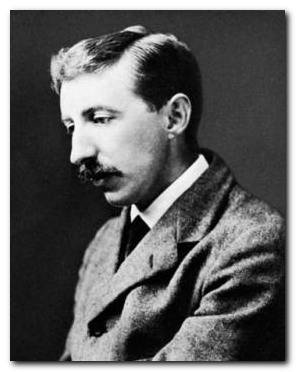
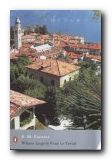 Lilia Herriton is a young woman whose huband has recently died. Leaving her daughter in the care of her in-laws (whose money she has inherited) she makes a journey to Tuscany with her young friend and traveling companion Caroline Abbott. She falls in love with both Italy and Gino Carella, a handsome Italian much younger than herself, and decides to stay. Furious, her dead husband’s family send Lilia’s brother-in-law to Italy to prevent a misalliance, but he arrives too late. Lilia has already married the Italian and in due course she becomes pregnant.
Lilia Herriton is a young woman whose huband has recently died. Leaving her daughter in the care of her in-laws (whose money she has inherited) she makes a journey to Tuscany with her young friend and traveling companion Caroline Abbott. She falls in love with both Italy and Gino Carella, a handsome Italian much younger than herself, and decides to stay. Furious, her dead husband’s family send Lilia’s brother-in-law to Italy to prevent a misalliance, but he arrives too late. Lilia has already married the Italian and in due course she becomes pregnant.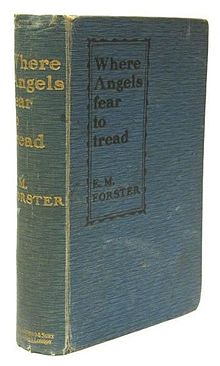
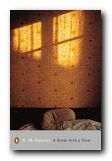 A Room with a View
A Room with a View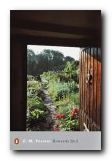 Howards End
Howards End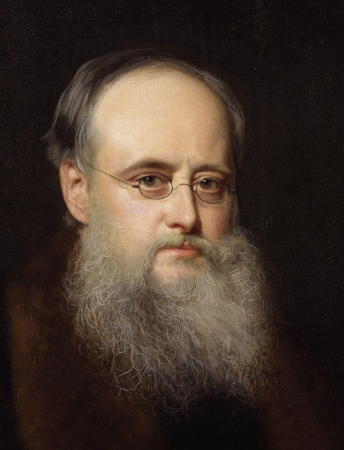
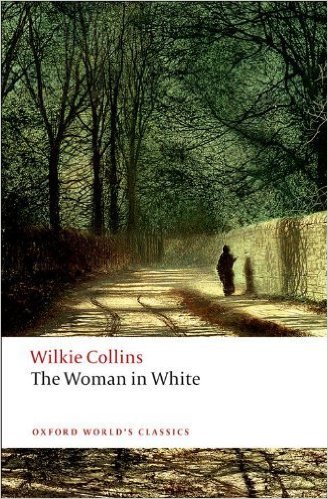
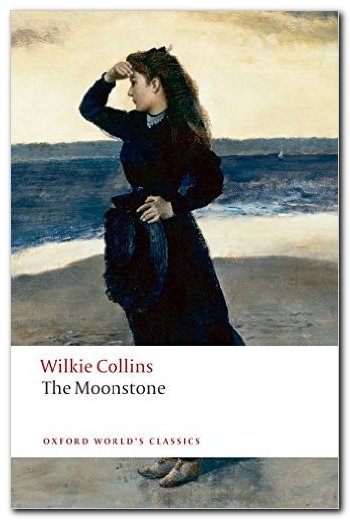
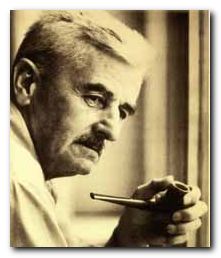 William Faulkner (1897—1962) grew up in Oxford, Mississippi, and lived there for the rest of his life – with only brief intermissions for travel and working in Hollywood as a screenwriter. He was one of the major American writers of the early twentieth century. He established the white protestant version of the American south, reflecting its values of that period – the collapse of the white land owning aristocracy and the inability (at that time) of the blacks to shake off the legacy of slavery. Faulkner was a literary experimentalist, influenced by the modernist period, and he sometimes makes extreme demands on his readers. He uses stream of consciousness, fragmented chronology, shifting point of view, and multiple narrative voices. Even in some of his plain narratives, the story is expressed in sentences which sometimes go on for two or three pages at a time.
William Faulkner (1897—1962) grew up in Oxford, Mississippi, and lived there for the rest of his life – with only brief intermissions for travel and working in Hollywood as a screenwriter. He was one of the major American writers of the early twentieth century. He established the white protestant version of the American south, reflecting its values of that period – the collapse of the white land owning aristocracy and the inability (at that time) of the blacks to shake off the legacy of slavery. Faulkner was a literary experimentalist, influenced by the modernist period, and he sometimes makes extreme demands on his readers. He uses stream of consciousness, fragmented chronology, shifting point of view, and multiple narrative voices. Even in some of his plain narratives, the story is expressed in sentences which sometimes go on for two or three pages at a time.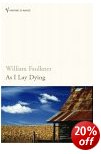 As I Lay Dying (1930) is a good point to start. It charts the journey of a poor family to bury their mother Addie Bundren in Jefferson. They make the coffin themselves and survive crossing the flooded Yoknapatwapha river, a fire, and other largely self-inflicted problems, to finally reach their goal. The novel is told in the rapidly intercut voices of the family members – including the dead mother. It is simultaneously funny, and tragic – a small scale epic which Faulkner wrote in the space of six weeks.
As I Lay Dying (1930) is a good point to start. It charts the journey of a poor family to bury their mother Addie Bundren in Jefferson. They make the coffin themselves and survive crossing the flooded Yoknapatwapha river, a fire, and other largely self-inflicted problems, to finally reach their goal. The novel is told in the rapidly intercut voices of the family members – including the dead mother. It is simultaneously funny, and tragic – a small scale epic which Faulkner wrote in the space of six weeks. The Sound and The Fury is generally regarded as his greatest work. It is a narrative tour de force in which Faulkner views the decline of the south through the point of view of four characters. The novel centres on the once-aristocratic Compson family, who appear in his other novels. The siblings Quentin and Caddy fall from a state of innocence and succumb to the family pattern of incest, erotomania, and suicide. One of their brothers is severely mentally handicapped. The first part of the novel is told entirely from his point of view – and of course he ‘sees’ the truth of much that is going on. The other narrator is the black servant who is powerless but ‘endures’. It is a work of astonishing brilliance, written in a sombre and lyrical mood.
The Sound and The Fury is generally regarded as his greatest work. It is a narrative tour de force in which Faulkner views the decline of the south through the point of view of four characters. The novel centres on the once-aristocratic Compson family, who appear in his other novels. The siblings Quentin and Caddy fall from a state of innocence and succumb to the family pattern of incest, erotomania, and suicide. One of their brothers is severely mentally handicapped. The first part of the novel is told entirely from his point of view – and of course he ‘sees’ the truth of much that is going on. The other narrator is the black servant who is powerless but ‘endures’. It is a work of astonishing brilliance, written in a sombre and lyrical mood.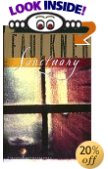 Sanctuary (1931) is an example of Faulkner writing simultaneously at his best and worst. The novel was produced to make money, and is a sort of rural South whodunit which centres on a particularly grizzly crime. All the southern Gothic elements are here. The main plot revolves around Temple Drake, a coquettish college girl who likes to secretly sneak out of her college dorm to attend dances. She takes one step too far onto the wild side, and the result is a helter-skelter ride down into the moral abyss. The novel also includes a psychopathic bootlegger, corrupt local officials, the trial of an innocent man, and a public lynching. It was Faulkner’s only best-seller.
Sanctuary (1931) is an example of Faulkner writing simultaneously at his best and worst. The novel was produced to make money, and is a sort of rural South whodunit which centres on a particularly grizzly crime. All the southern Gothic elements are here. The main plot revolves around Temple Drake, a coquettish college girl who likes to secretly sneak out of her college dorm to attend dances. She takes one step too far onto the wild side, and the result is a helter-skelter ride down into the moral abyss. The novel also includes a psychopathic bootlegger, corrupt local officials, the trial of an innocent man, and a public lynching. It was Faulkner’s only best-seller.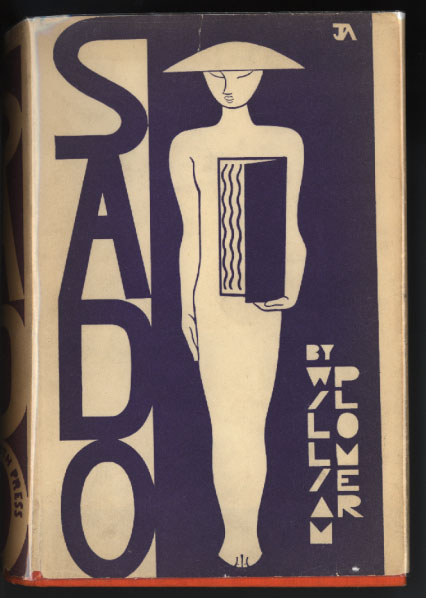
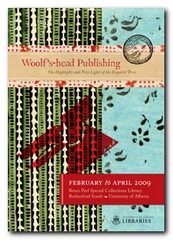
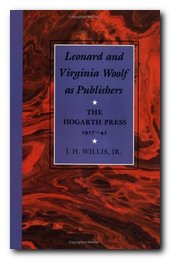
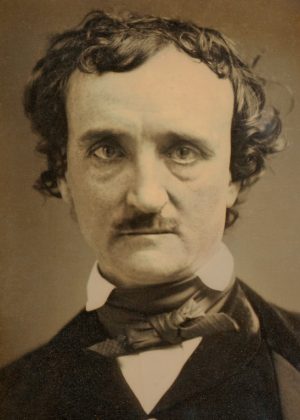
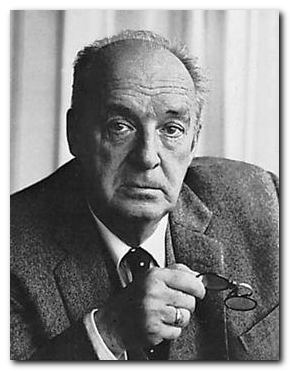
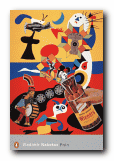 Pnin
Pnin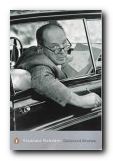 Collected Stories
Collected Stories
 Women in Love was originally published in New York City as a limited edition (1250 books), available only to subscribers; this was due to the controversy caused by The Rainbow. Because the two books were originally written as parts of a single novel, the publisher had decided to publish them separately and in rapid succession. The first book’s treatment of sexuality, while tame by today’s standards, was rather too frank for the Edwardian era. There was an obscenity trial and The Rainbow was banned in the UK for 11 years, although it was available in the US. The publisher then backed out of publishing the second book in the UK, so it first appeared in the US in 1920.
Women in Love was originally published in New York City as a limited edition (1250 books), available only to subscribers; this was due to the controversy caused by The Rainbow. Because the two books were originally written as parts of a single novel, the publisher had decided to publish them separately and in rapid succession. The first book’s treatment of sexuality, while tame by today’s standards, was rather too frank for the Edwardian era. There was an obscenity trial and The Rainbow was banned in the UK for 11 years, although it was available in the US. The publisher then backed out of publishing the second book in the UK, so it first appeared in the US in 1920.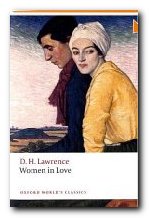 All four are deeply concerned with questions of society, politics, and the relationship between men and women. Ultimately however, the two relationships go in very different directions. The initial strife between Birkin and Ursula over his lingering attachment to the controlling Hermione Roddice is resolved by his eventual willingness to break off their relationship, and Birkin and Ursula give up their jobs as teachers to take up a more bohemian lifestyle.
All four are deeply concerned with questions of society, politics, and the relationship between men and women. Ultimately however, the two relationships go in very different directions. The initial strife between Birkin and Ursula over his lingering attachment to the controlling Hermione Roddice is resolved by his eventual willingness to break off their relationship, and Birkin and Ursula give up their jobs as teachers to take up a more bohemian lifestyle.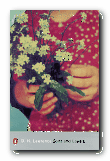 Sons and Lovers
Sons and Lovers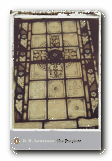 The Rainbow
The Rainbow